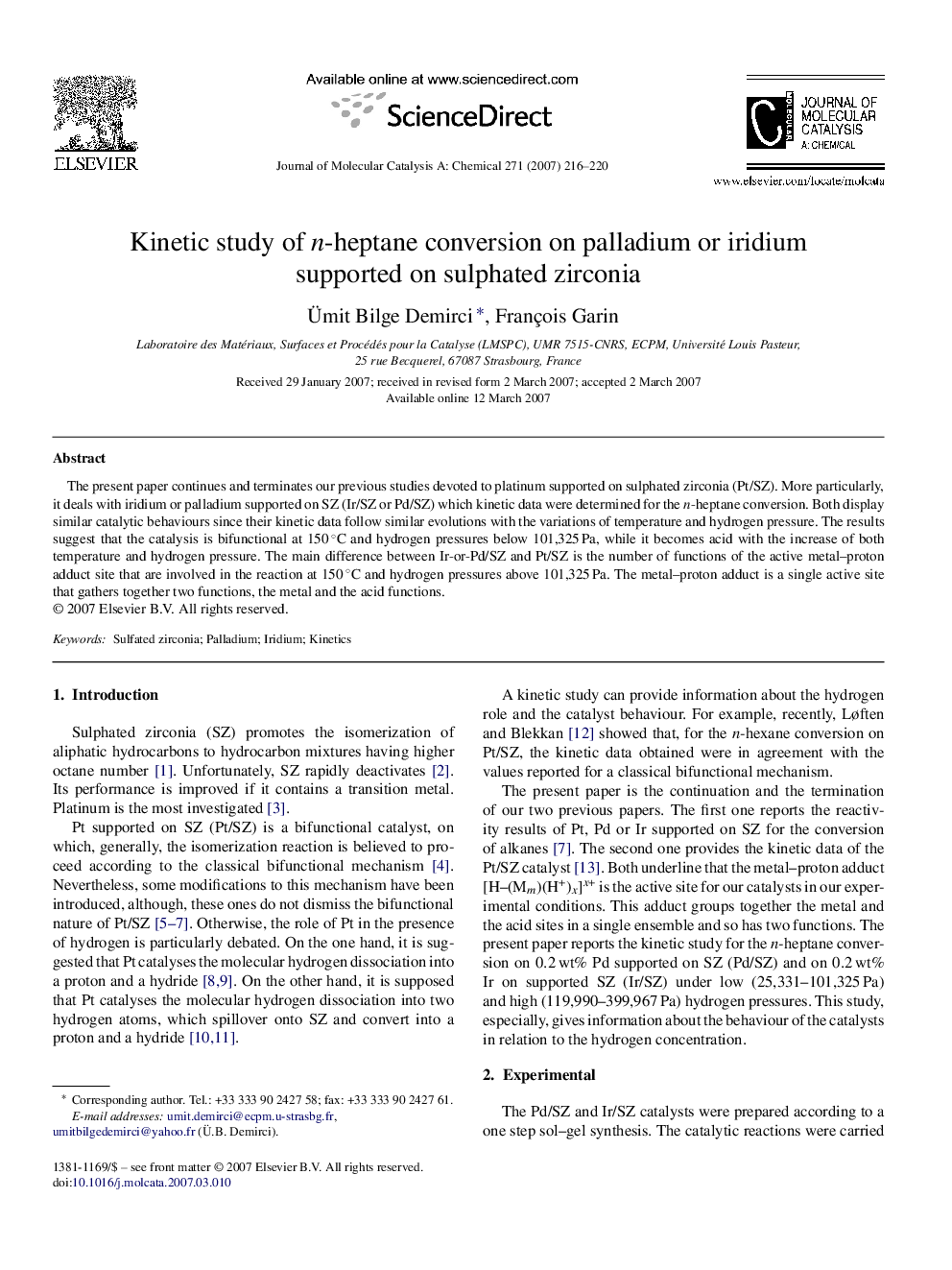| Article ID | Journal | Published Year | Pages | File Type |
|---|---|---|---|---|
| 67827 | Journal of Molecular Catalysis A: Chemical | 2007 | 5 Pages |
The present paper continues and terminates our previous studies devoted to platinum supported on sulphated zirconia (Pt/SZ). More particularly, it deals with iridium or palladium supported on SZ (Ir/SZ or Pd/SZ) which kinetic data were determined for the n-heptane conversion. Both display similar catalytic behaviours since their kinetic data follow similar evolutions with the variations of temperature and hydrogen pressure. The results suggest that the catalysis is bifunctional at 150 °C and hydrogen pressures below 101,325 Pa, while it becomes acid with the increase of both temperature and hydrogen pressure. The main difference between Ir-or-Pd/SZ and Pt/SZ is the number of functions of the active metal–proton adduct site that are involved in the reaction at 150 °C and hydrogen pressures above 101,325 Pa. The metal–proton adduct is a single active site that gathers together two functions, the metal and the acid functions.
Graphical abstractThe metal–proton adduct site (below) explains the particular behaviour of Ir or Pd supported on sulphated zirconia for n-heptane conversion. The kinetic data suggest a transition from a bifunctional catalysis to an acid catalysis with increasing hydrogen pressure and/or reaction temperature.Figure optionsDownload full-size imageDownload as PowerPoint slide
